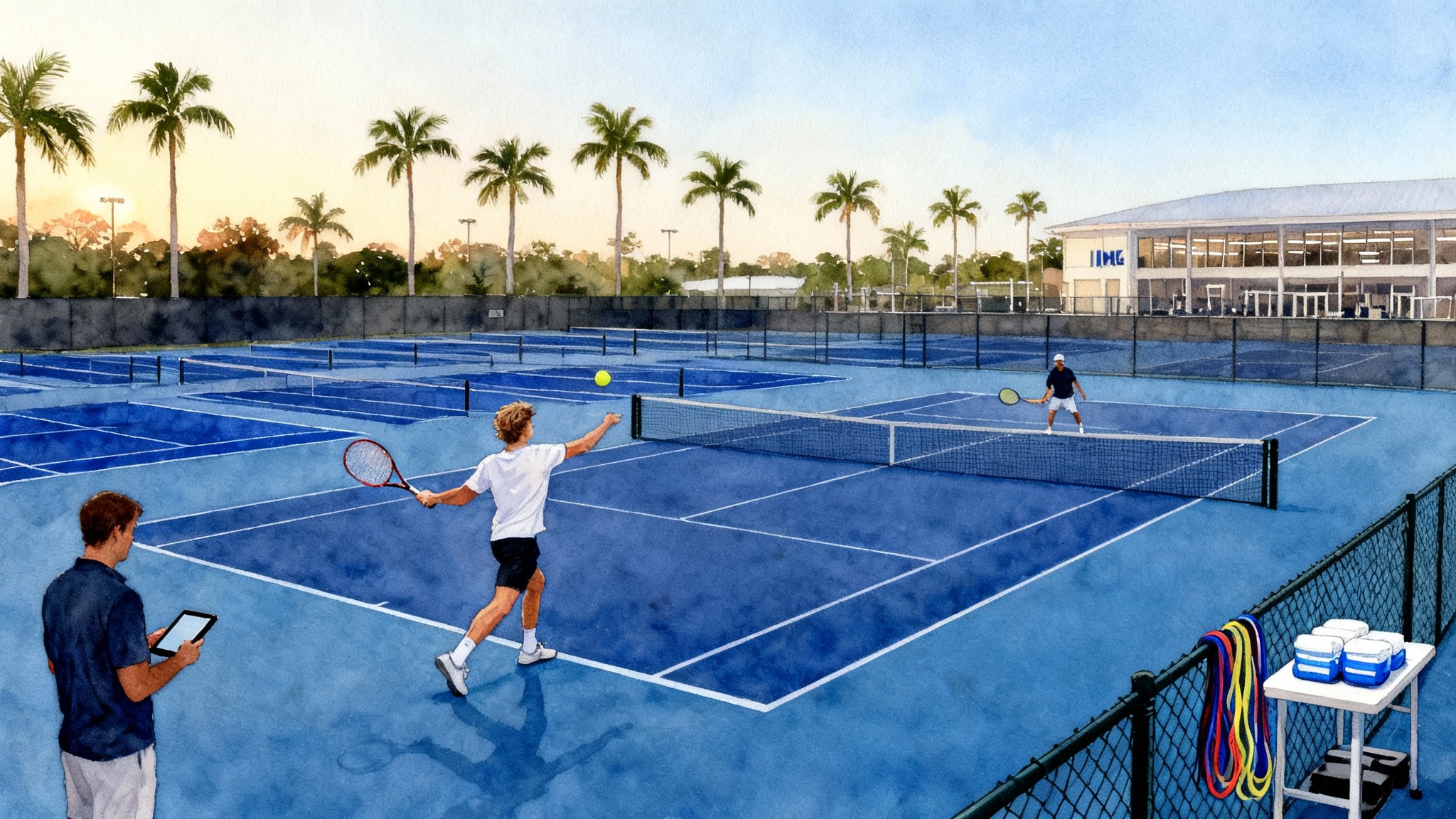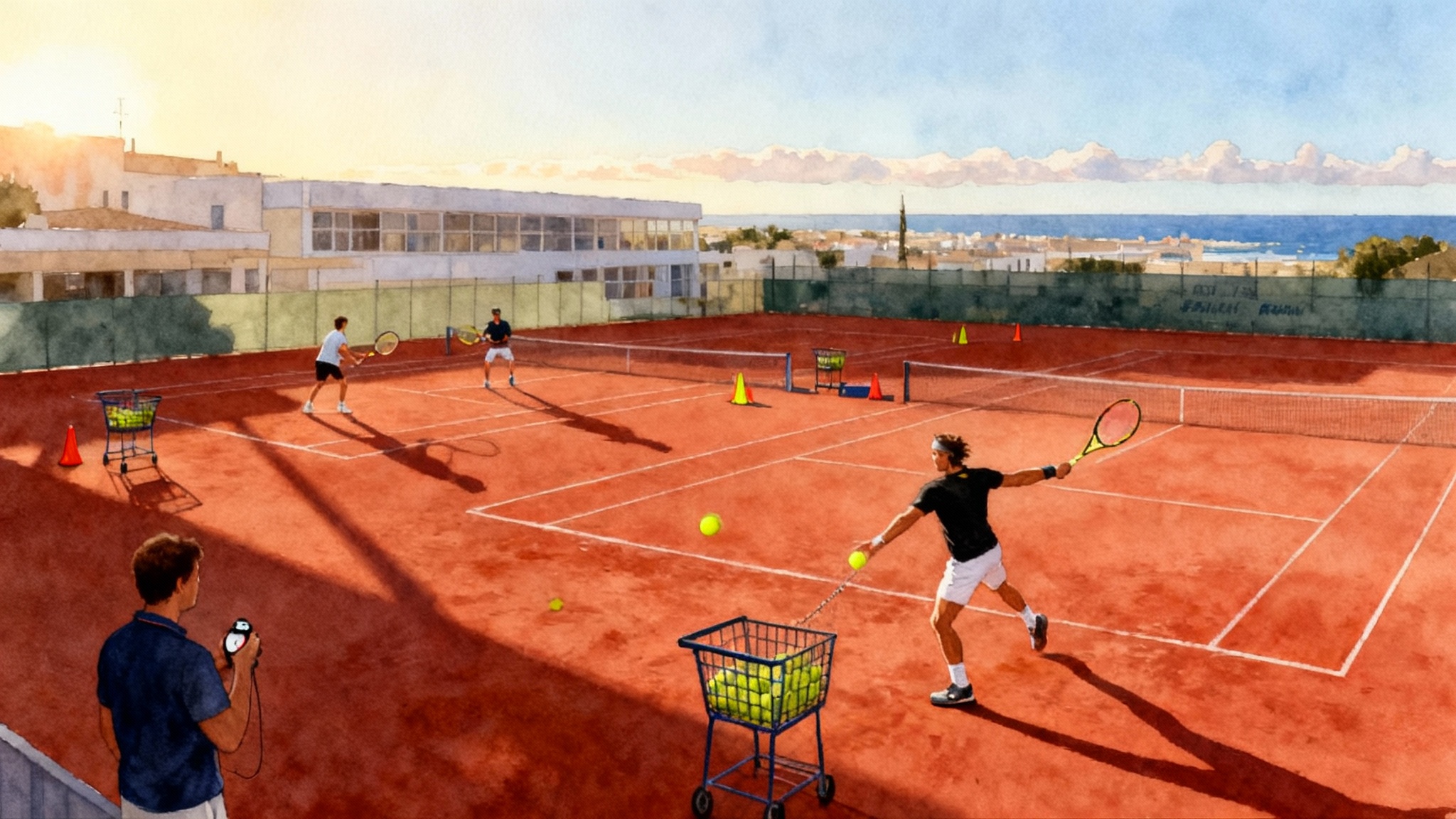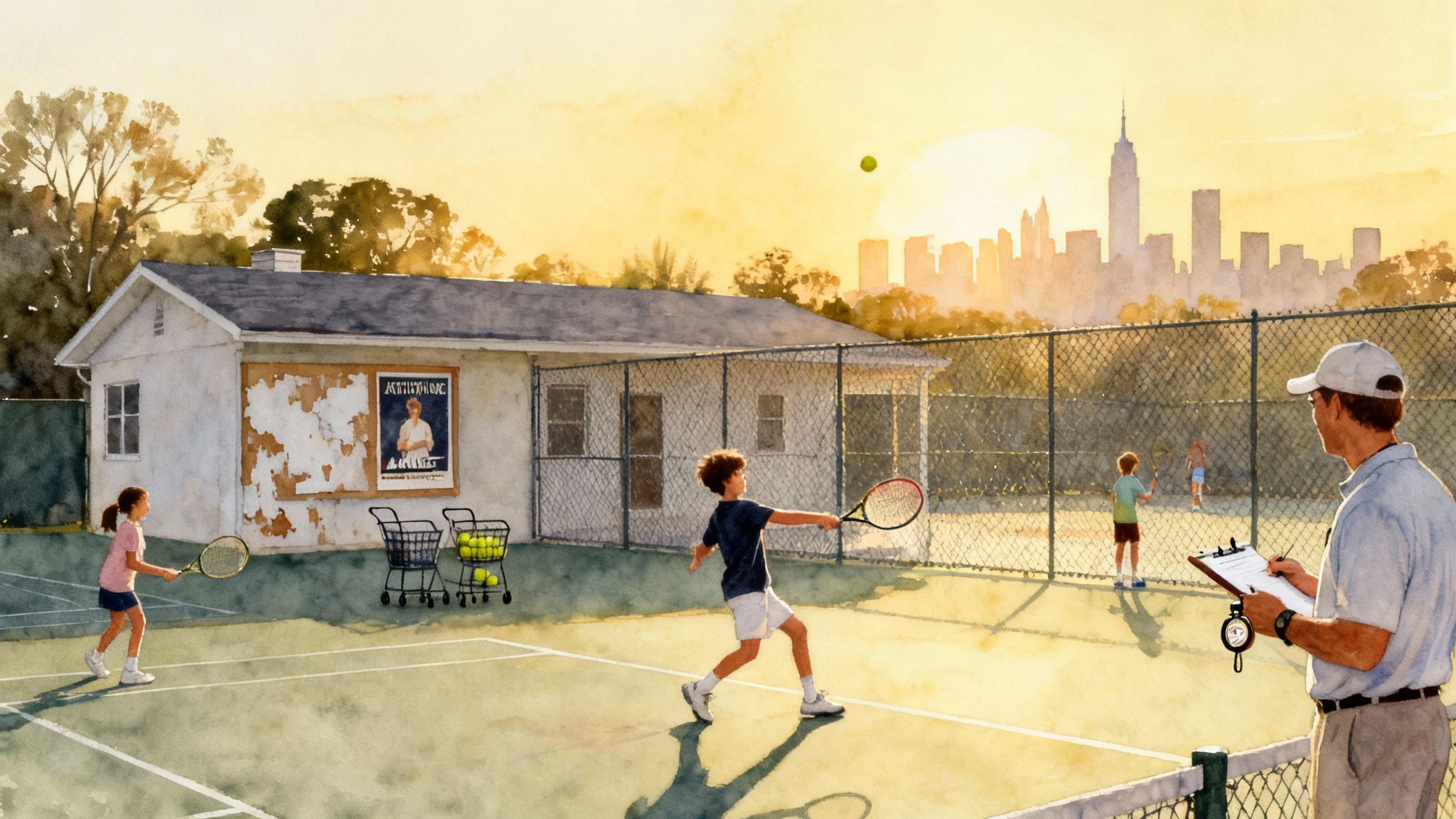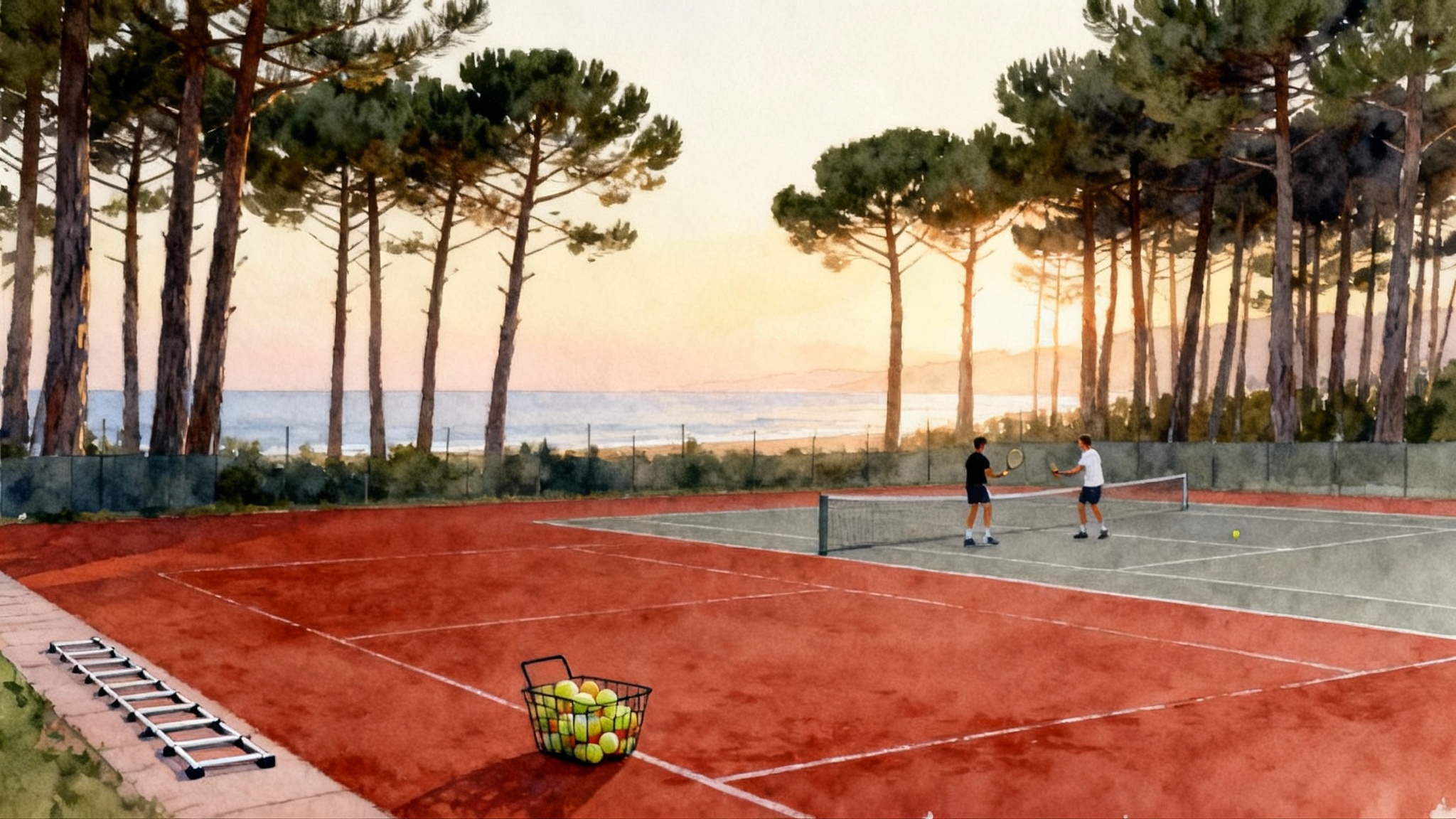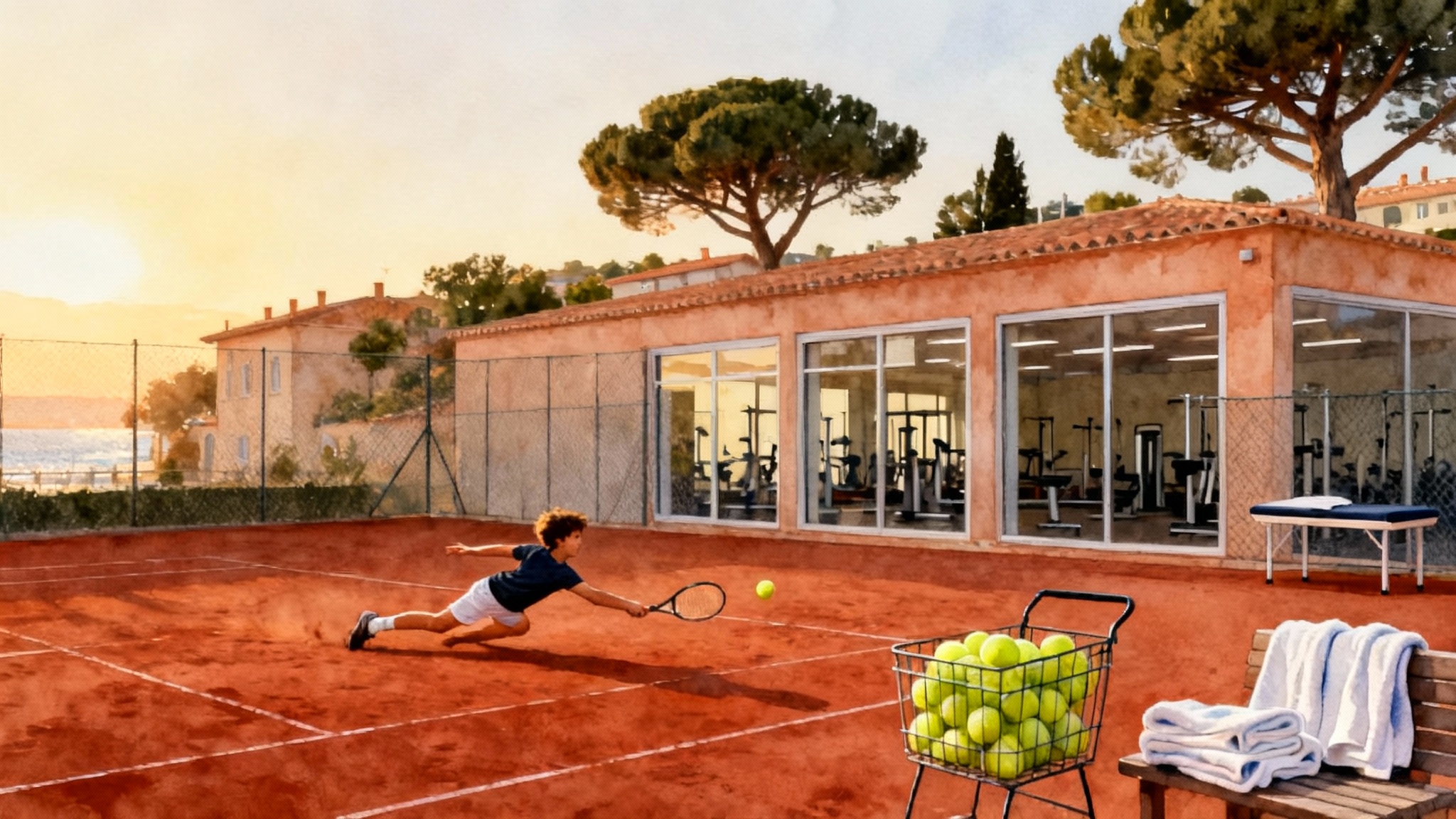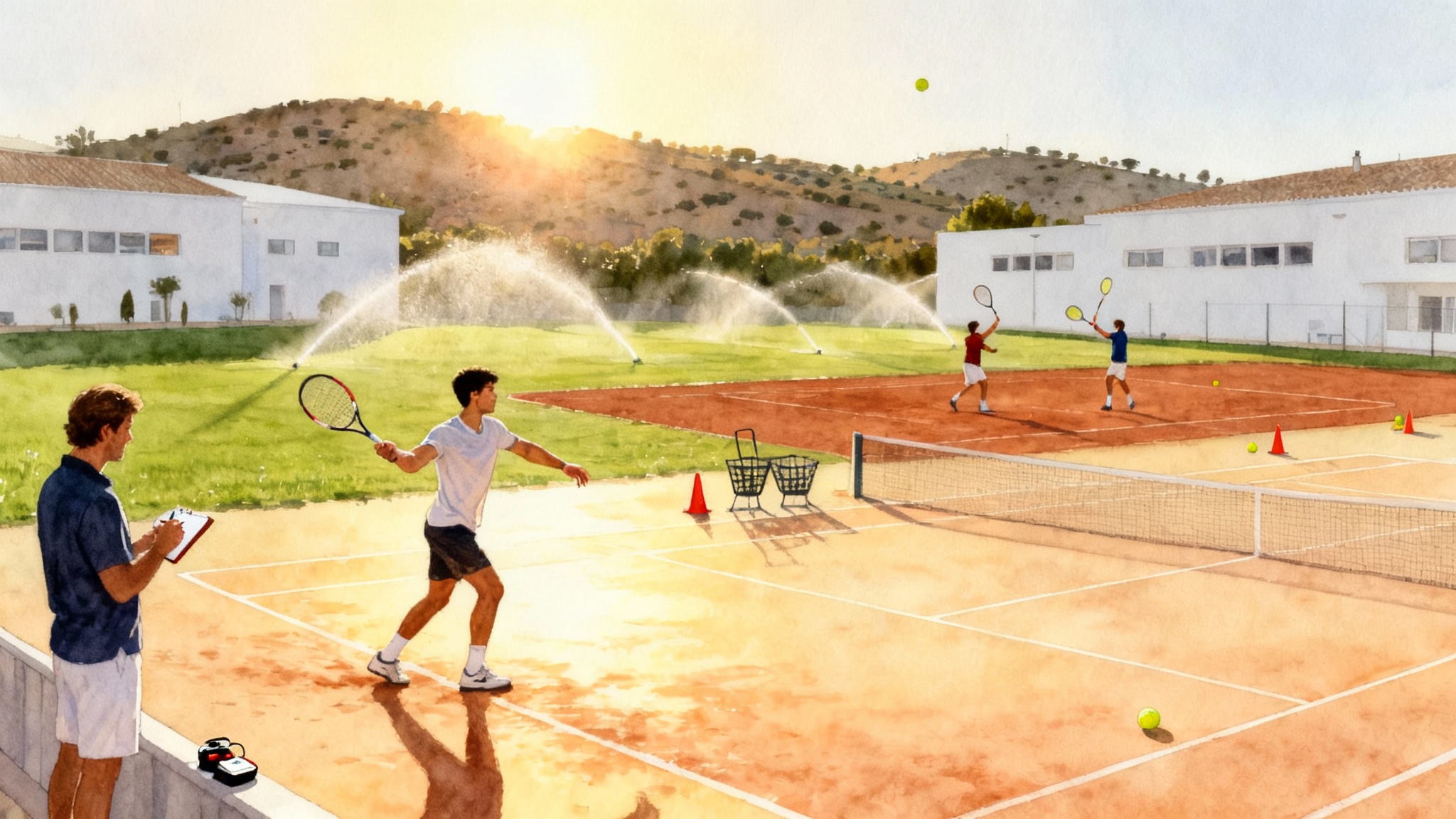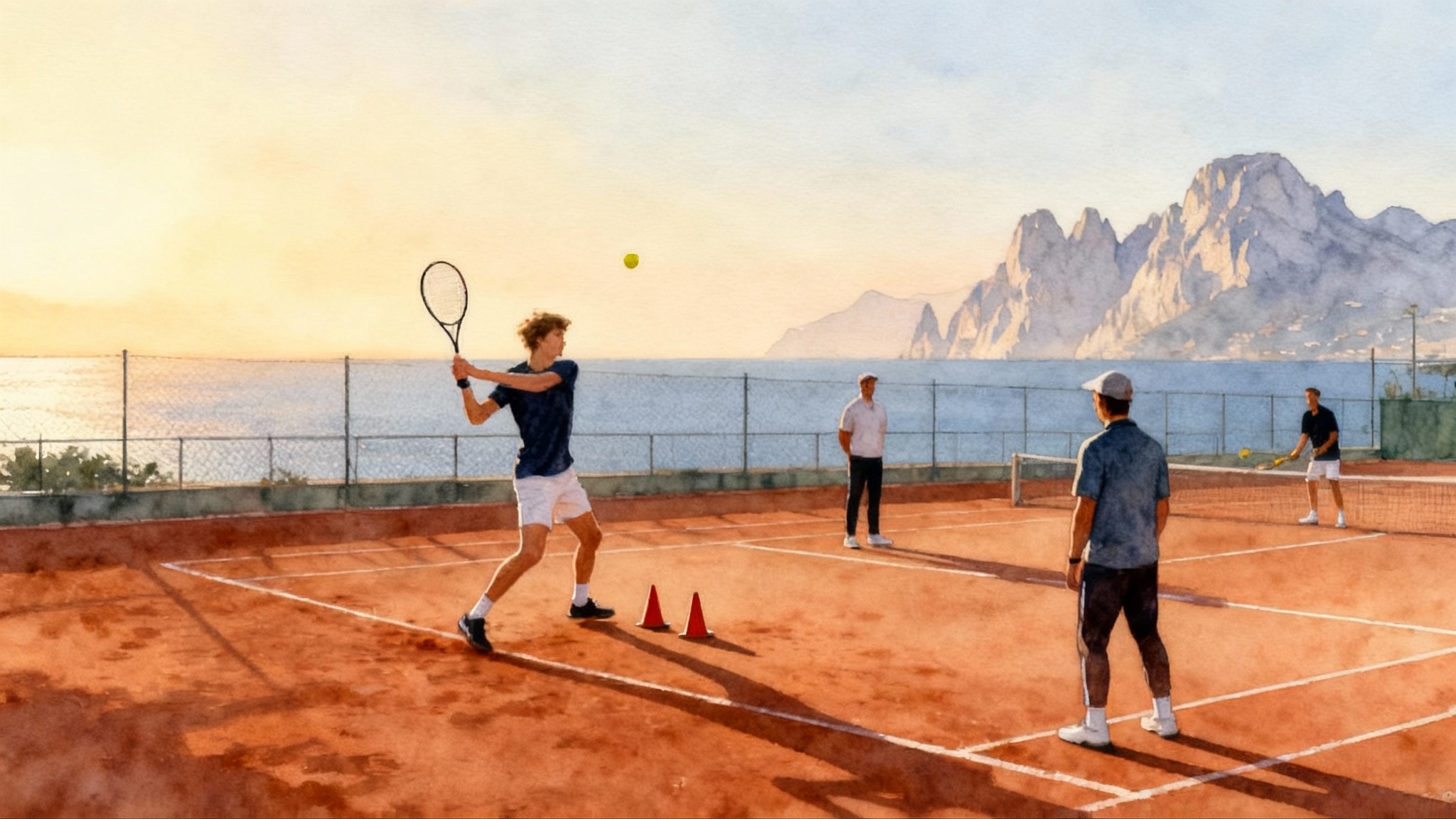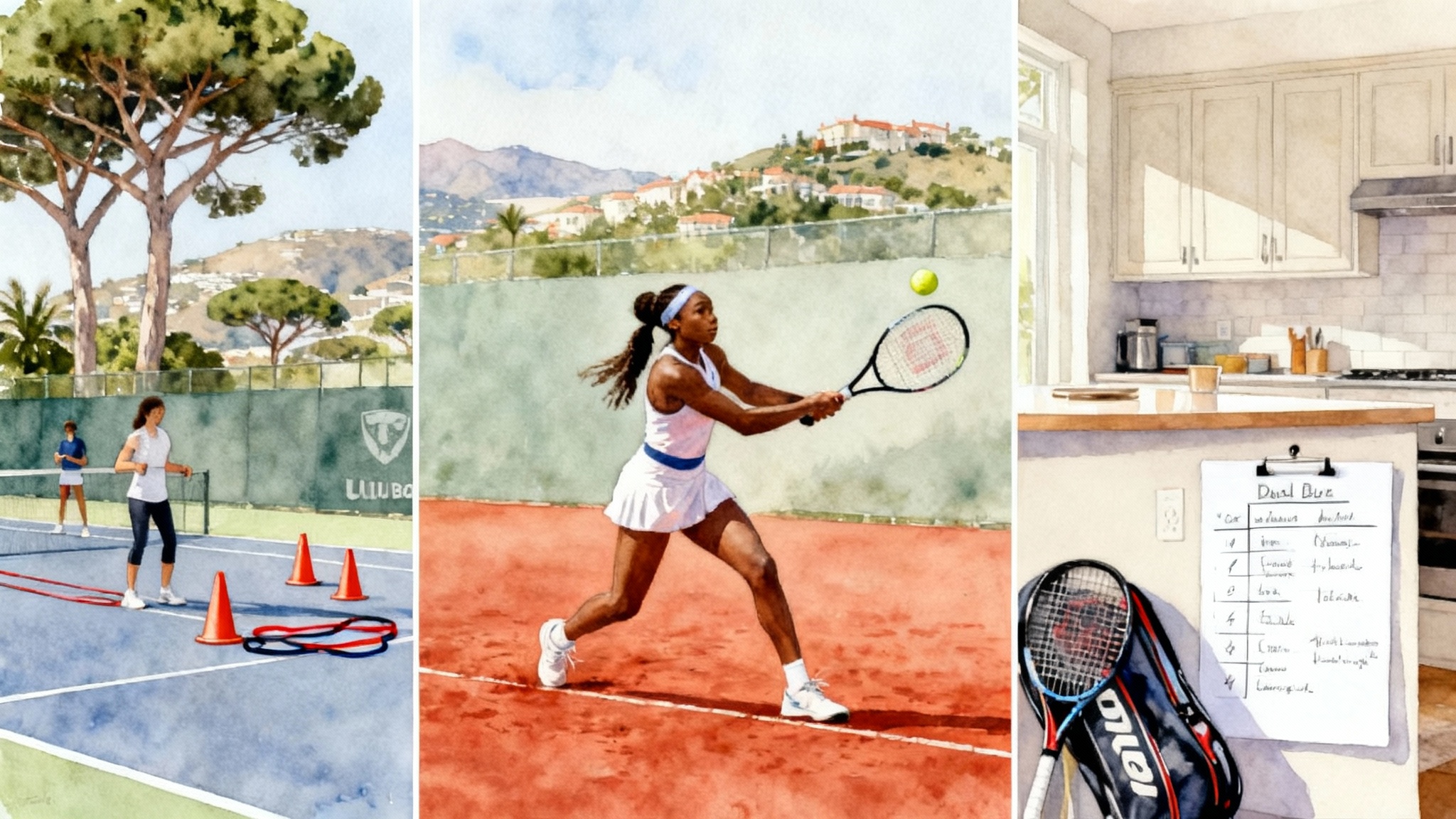Emma Navarro’s Blueprint from LTP Academy to WTA Top 10
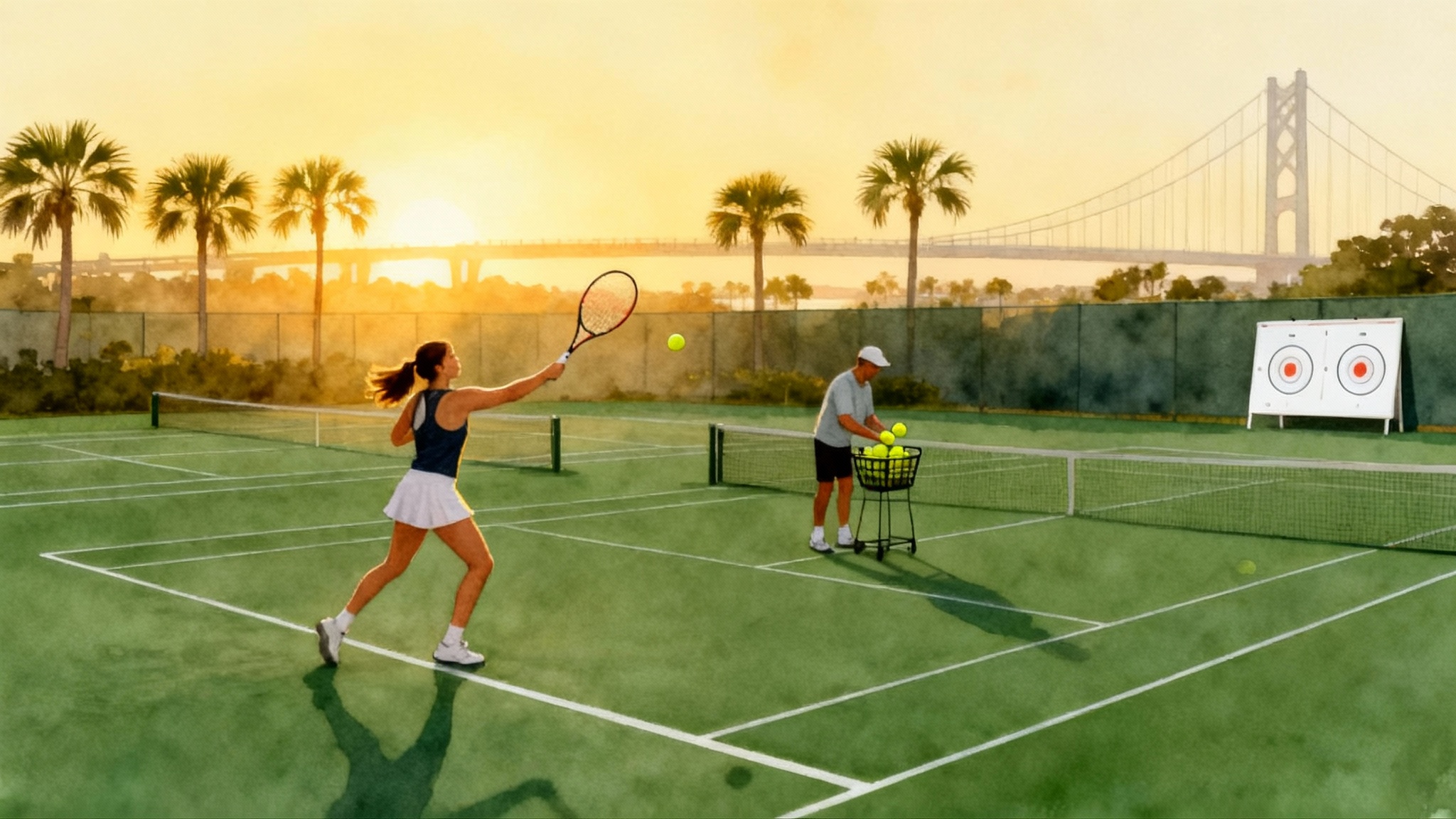
The Charleston system that raised a Top 10 pro
If you drive across the Wando and turn onto Seven Farms Drive, you see why so many promising juniors stop in Charleston to sharpen their game. LTP Academy feels like a working lab, not a showroom. Courts are always full, coaches float from footwork lanes to serve pods, and the calendar is stacked with junior, college, and pro events. From this environment, Emma Navarro learned how to train like a professional long before she became one.
In 2024 she broke into the world's top ten and reached No. 8, then reentered the top tier again during stretches of 2025. That climb is documented on her career-high No. 8 ranking and week-by-week progress. The headline achievement matters, but the real story is how Charleston's junior-to-pro pathway and a strategic detour through the University of Virginia created a runway that turned academy habits into tour results.
This is her blueprint, translated into choices that parents and juniors can use.
What LTP Academy actually does differently
Think of an academy like a train station. Many places sell tickets to big dreams; the best ones build platforms that connect to real tracks. LTP Academy's platform has three rails that mattered for Navarro. For another example of academy-to-pro continuity, see how JTCC shaped Frances Tiafoe in our JTCC case study.
-
Junior to pro under one roof
From red-ball classes to high performance, players move through a consistent language of footwork, recovery patterns, and patterns of play. When those juniors start winning national events or International Tennis Federation matches, they do not have to change the way they train. They scale it. That continuity reduces friction during the jump from 14s and 16s to pro qualifying.
-
Consistent voices, clear roles
LTP's staff includes a head coach for the pro group, leads for high performance, and specialists for strength, footwork, and point construction. Navarro's primary coach is Peter Ayers, part of a bench that also includes leaders like Patrick Hieber and Michael Sell working across programs. The structure is visible on the academy's staff pages for Peter Ayers and the LTP staff. A consistent message across coaches minimizes mixed signals, which is one reason Navarro's patterns look the same in Charleston and on the stadium court.
-
Daily exposure to big-time tennis
LTP runs high-level junior events, International Tennis Federation tournaments, and professional tune-ups. Charleston also hosts a major spring tour stop at the Credit One complex, which brings elite players and hitting partners into the neighborhood. Navarro did not need to fly across the world to feel what the level demands. She could watch it, hit with it, and still sleep in her own bed.
The college detour that sped things up
When Navarro chose the University of Virginia, some observers assumed it would slow her down. The opposite happened. College tennis gave her three accelerants that academies alone rarely provide. Families considering school-integrated training models can also study Emilio Sánchez Academy Barcelona for a European version of structure plus academics.
- Match density without travel debt: Dual matches pack three competitive sets into one afternoon. Add fall individual events and you get a steady diet of pressure points without airports and time zones.
- Team pressure that feels human: Playing for teammates and a school changes the emotional math. It forces players to manage nerves, routines, and momentum swings while other people's outcomes depend on them. That muscle transfers to tour tiebreaks.
- Strength and academic rhythm: College training blocks include supervised lifting, monitored recovery, and guardrails on sleep and study. The result is a stronger athlete who can work hard without running on fumes.
Navarro capped her freshman year by winning the 2021 National Collegiate Athletic Association singles title, then moved back toward the pro track with more confidence, a clearer identity, and a body that could handle the volume.
Training blocks that travel
Tour tennis is not one endless grind. It is a stack of four to six week blocks with a theme. Navarro's Charleston habits turn those blocks into repeatable engines. For another look at a block-based approach that scales, see how a top program framed Jannik Sinner's rise in our Piatti Academy analysis.
- Technical windows: Two to three sessions per week target one upgrade. On green clay this might mean inside-out forehand plus recovery crossover, or backhand line to open the cross. Reps are measured in clean contacts, not minutes.
- Live patterns: Point-play that matches the next surface. On clay, build with high margin cross and finish up the line. On grass or a fast hard court, simplify first strikes and move forward sooner.
- Serve and return pods: Twenty to thirty minutes daily split into first-serve locations, second-serve shape, and return depth. The goal is not aces. It is a playable plus-one ball more often than last week.
- Fitness and movement: Footwork ladders for rhythm, sled pushes for force, short hill sprints for acceleration, and med-ball throws for rotational power. These are cycled to avoid dead legs on heavy match days.
- Film and feedback: One technical clip per week, one match clip per week. Players see the pattern, not just the error. Corrections are named and written in a notebook so the next week starts ahead.
Here is a sample four-week clay block that maps to what a Charleston spring can look like.
- Week 1, build the engine: Two technical days on forehand height and shape, two live-ball days, one fitness emphasis day with tempo runs and mobility. One practice match to set a baseline.
- Week 2, sharpen the edges: Add serve-plus-one patterns, expand return depth targets. Increase practice set play to two per week. One day off for complete recovery.
- Week 3, simulate the draw: Three match-play days in a row with different styles. Add a midweek lift for maintenance strength. One session on short-ball patterns inside the baseline.
- Week 4, taper and compete: Reduce volume, keep quality. Serve and return pods stay daily but shorter. Travel day planned 48 hours before the first round.
The point is not perfect replication. It is the rhythm. When the calendar turns to grass or indoor hard courts, the themes change but the scaffolding stays the same.
Scheduling choices that built momentum
Navarro's 2024 season began with a title run in January and kept rising through the spring. In March she took out top seeds in the desert and kept stacking wins at big events. By September 2024 she reached a career high of No. 8, then returned to the top ten during parts of 2025, including a dominant WTA 500 title run in early March where she did not lose a set. The pattern inside that success reveals a scheduling playbook any aspiring pro can adapt. For another example of smart sequencing from junior to elite, read our Coco Gauff pathway study in Delray to Riviera, Boca to Europe.
- Start the year where confidence grows: Choose one early event that fits your game and has manageable conditions. Get matches, not marketing points. One early win can anchor three months of progress.
- Protect home weeks: Charleston spring weeks are circled months in advance. Training and rest are shaped around them. Sleeping at home while playing a big event is rare leverage, and families should treat it like a once-a-year advantage.
- Mix levels on purpose: Do not chase only the biggest stage. Use a Challenger or 250-level event to reset when form dips, then step back up. This is not retreat. It is a pressure release valve that keeps rankings moving.
- Build in breathers: Two to three times per season, plan a ten to fourteen day window with no matches. Use it to fix something technical and to reset the body. The next block will pay for the pause.
Parents sometimes fear that skipping a week looks like lost ground. The ranking math rewards players who come back fresh and bank bigger rounds, not those who grind tired and lose early.
Team structure you can copy
Great results rarely come from a solo act. Navarro's touring core centers on head coach Peter Ayers, with LTP Academy support at home and specialists added when needed. A simple model for families looks like this.
- Head coach: Owns the game identity and seasonal plan. Filters advice so the player hears one voice.
- Fitness lead: Designs strength and movement blocks that match the tournament calendar. Adjusts loads week to week.
- Technical specialist: A second set of eyes who checks the same fundamentals twice a month and flags drift before it sticks.
- Performance care: Access to physio or massage once per block. Not every week, just enough to catch issues early.
- Operations: A parent or manager who handles flights, housing, and stringing so decision-making energy is saved for the court.
LTP's value here is practical. When a player returns from a trip, the same courts and the same coaches plug back into the plan. There is no reboot.
Five takeaways for parents and aspiring juniors
- Define one game identity sentence: Write a single line such as, I win with heavy crosscourt forehands and early backhand takes up the line. This tells your coaches what to train and what to de-emphasize.
- Build your year in four blocks: Two surface-specific blocks before spring and summer, one reset after the U.S. Open window, and one indoor or pre-season block before January. Treat each block like a mini season with a theme and a goal you can measure.
- Choose two anchor events and defend them: Circle two tournaments where travel is easy and conditions suit your game. Plan your rest and training so you arrive sharper there than anywhere else.
- Use college as an accelerator, not a delay: If you are 16 to 18 and more structure will help you, a year or two of college can give you competitive reps, strength, and emotional maturity while you keep improving. The key is to keep the pro blueprint alive inside the college schedule.
- Keep a one-page dashboard: Track serves made to targets, return depth, break-point conversion, and sleep. Update it weekly. Small numbers beat big feelings when it is time to adjust.
A Charleston week you can borrow
Here is a template that mirrors how an LTP-style schedule can flow during a home training week. The goal is to build capacity without dulling your edge.
-
Monday
- Morning: Serve pod, 24 first serves to three targets, 18 second serves with kick or slice depending on surface.
- Midday: Technical block on backhand rhythm, 30 minutes of basket plus 20 minutes of live crosscourt.
- Afternoon: Gym, lower body strength and trunk rotation, finish with mobility.
-
Tuesday
- Morning: Return plus one patterns, alternating deuce and ad court depth goals.
- Midday: Practice set with pattern bonuses. One extra point if you finish at the net or hit a planned change of direction.
- Recovery: Ice, hydration plan, 8 hours of sleep minimum.
-
Wednesday
- Morning: Footwork circuit, short sprints, split-step timing on coach feed.
- Midday: Serve plus one wide on deuce and body on ad, then play two tiebreaks.
- Film: Ten minutes of clips, two corrections written in your notebook.
-
Thursday
- Morning: Two practice sets. Focus on between-point routines and breathing cadence.
- Gym: Upper body push and pull, scapular control, med-ball rotational throws.
-
Friday
- Morning: Pattern polish, approach and first volley depth.
- Midday: Points starting neutral at 3-all. Practice the exact scoreboard that sparks nerves.
-
Saturday
- Match play with a style you will face next week. If the draw tends to produce heavy topspin forehands, find that hitter. If it leans flat and early timing, find that hitter.
-
Sunday
- Off. Walk, stretch, cook. Review your dashboard. Name one thing you will do more next week, and one you will do less.
Mechanisms behind the rise, in plain terms
- Stability beats novelty: The same on-court language from 12 through 22 creates automatic responses under pressure. That is why a clean crosscourt to corner plus recovery crossover shows up in second-week majors. It was baked in long before tour life.
- Habits scale when the environment scales: When pro events live in your backyard, your practice balls and your match balls look and feel similar. You do not need two identities.
- Wins compound when scheduling is honest: Chasing prestige events can feel brave, but the ranking rewards smart sequencing. A win at the right level does more for belief and points than a brave first-round loss three time zones away.
What this means for your player
If your child is 10 to 14, worry less about a perfect backhand and more about a reliable training week that keeps showing up. If your player is 15 to 17, start stacking blocks that match the calendar you want next summer. If your player is 18 to 20 and not quite ready for full-time travel, a year of college can compress growth. The common thread is a plan your team can run even when results wobble.
Navarro's proof is simple. She learned in Charleston, pressure-tested in college, then brought the same week to tour cities around the world. The numbers are public, and so is the method. Copy the structure, not the story. Your player's version will look different in the details, but the rails are the same.
Conclusion: The long runway that looks like a shortcut
From Daniel Island to the second week of majors, the path was not mystical. It was a repeatable week, run in smart blocks, surrounded by a team that spoke the same language and picked tournaments with intention. That is why a top ten ranking did not arrive as a surprise. It was a scheduled stop on tracks that were laid years earlier. Build the platform, stay patient with the blocks, and the train tends to arrive on time.
